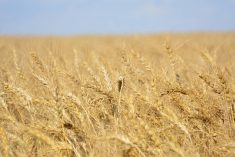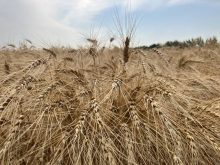SASKATOON — Spring wheat protein premiums are basically non-existent right now and an analyst doesn’t see that changing anytime soon.
“I don’t foresee protein spreads changing a lot unless this upcoming (U.S.) hard red winter harvest comes in significantly below normal in terms of protein,” said MarketsFarm analyst Bruce Burnett.
He believes premiums have evaporated in the U.S. market due to strong imports of Canadian spring wheat and reduced blending requirements from millers.
Read Also

New program aims to support plant-based exports to Asia
Understanding the preferences of consumers in Taiwan and how they differ from Indonesia or Malaysia isn’t easy for a small company in Saskatchewan.
The spread between Minneapolis and Kansas wheat futures contracts is minimal.
International wheat buyers are paying nothing for protein, according to prices in the Pacific Northwest.
Tyson Giles, director of wheat trading with CHS Inc., recently told delegates attending the North American Millers’ Association’s spring conference that the spring wheat balance sheet doesn’t appear heavy right now with a forecast 35 percent stocks-to-use ratio.
However, he noted that it could easily blossom to the mid-40 range if tariff wars disrupt shipments out of the Great Lakes or Texas Gulf ports to Europe and Mexico, according to a recent World-Grain.com article.
Giles anticipates much of the U.S. 2024-25 carryout will be low-protein wheat, which could be substituted for hard red winter wheat if their values come closer together.
The 2024 crop featured high protein in central and northeastern Montana and western North Dakota, but eastern North Dakota and northwestern Minnesota had below-average protein.
Burnett anticipates the U.S. will have adequate but not excessive carryout supplies of spring wheat.
“It’s higher than the drought years but it’s not extremely large,” he said.
Giles expects U.S. farmers to plant 9.5 million acres of spring wheat, down from 10 million acres last year. That is at odds with the U.S. Department of Agriculture’s February forecast calling for a small increase in spring wheat plantings.
Burnett thinks Giles is correct. He thinks corn will take away some spring wheat acres in North Dakota, South Dakota and parts of Minnesota. And Montana planted more winter wheat, which could hurt spring wheat acres in that state.
He thinks the total decline could be in the 500,000-to-one-million-acre range.
Giles said the U.S. Drought Monitor map shows it is slightly dry in western North Dakota heading into spring planting but not bad in other areas. The fate of the crop will really depend on spring rains.
Of course, the other big factor to watch in the U.S. spring wheat market are potential retaliatory tariffs with Canada, Mexico and the European Union.
“Trade flows are going to shift,” said Giles, according to the World-Grain.com article.
“The market will figure out trade flows, but they will change.”
Burnett said a trade war with the U.S. will trump all the market fundamentals surrounding wheat, including protein spreads.
“The thing is it’s all moot if we have a 25 percent tariff on wheat,” he said.


















